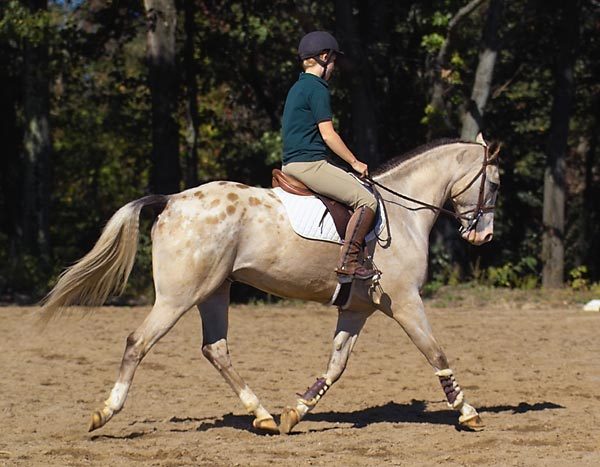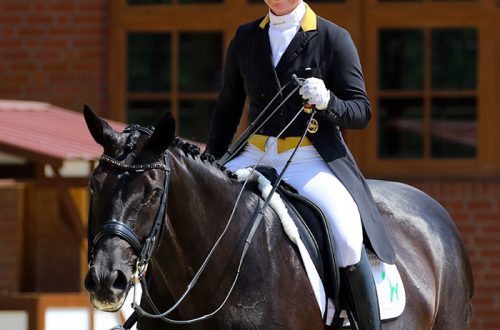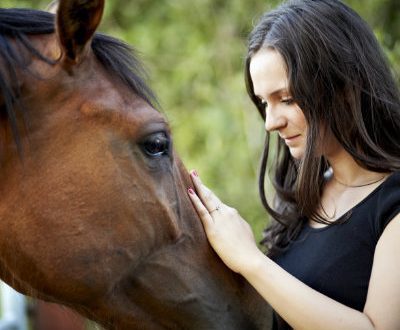
Perfecting the landing at the posting trot
IMPROVING POSTING TRONT LANDING
So, the time when you spent hours learning the posting trot is long gone. You have already started working on lateral movements, improving your technique while overcoming tricky routes. In other words, you are no longer a beginner. But the posting trot still deserves your attention. If you manage to get close to the ideal, you will easily see the result in increasing the performance and quality of your horse’s movements. In addition, perfecting your posting at the posting trot will make your arms more stable, and you’ll have better leg and sluice control.
First, let’s look at the differences between landing at the posting trot show jumpers and dressage riders. The position in which your body and legs are reallybut affects your horse.
Show jumping fit:
The body of the jumper should be slightly inclined forward. The best angle of such an inclination, according to the recommendations of many professionals, is 30º. In this way, the rider will move with the horse, whose movements will become more spacious and less constrained. At the posting trot, jumpers can also let the horse stretch forward and down, stretching the muscles of the back and neck. If the rider sits more vertically, then in the phase of returning to the saddle he will not be able to maintain lightness, it will be difficult to fall on the horse’s back, which will inevitably affect the horse’s reluctance to move forward, its movements will cease to be free and spacious.
Dressage fit:
Dressage riders, on the other hand, should sit upright in the saddle. Their hips should drop down as vertically as possible, and their shoulders should not lean forward. When moving at a trot, the hips rise forward and up and down. In this position, the leg is most calm and can be used when necessary. This rider position also encourages the horse to round the back and bring the hindquarters under the body more.
Next we will consider six types of basic problems in the posting trot and methods for their solutions.
1. The rider lowers heavily into the saddle.
Very often, riders at the posting trot do not move the body FORWARD * UP – DOWN, but UP – DOWN. At the same time, a landing is observed, which is called “like on a stool.” As a result, the rider sinks heavily or falls on the horse’s back, the balance is disturbed, the rider’s hands are not calm and he grabs the reins, pulling the horse’s mouth.
Solution:
For a contestant the following exercise will be helpful. Tie the rein around the horse’s neck (you can ask a helper to take you on the lunge). Place your hands on the horse’s neck, about “halfway” to the head. Ride at a posting trot for 15-20 paces, release your arms (fold them over your chest), remember to look ahead. If you lose your balance, put your back on the horse’s neck and repeat the exercise.
For the dressage rider, a pinched hip joint is a big problem. When riding the posting trot, focus on the stationary position of the knee: it should “point” down and be closed. Raise your hip forward from your knee, opening the angle of your thigh. Imagine that someone is pulling you by the belt from the saddle and then pushing you down.
2. Incorrect position of the legs.
If your leg goes back, then the body will fall forward. If the leg moves forward, onto the horse’s shoulder, then your body will fall back, far beyond the vertical line. Accordingly, your shoulders will be in the wrong position, which will affect the balance and control of the horse as a whole.
Decision:
Start at a trot and stand in the stirrups. You can stand upright or in a two-point position (field landing). If you do not lose balance, do not fall forward or backward, then your leg is in place. Remember her position and control in the future.
3. Eyes “On the ground.”
Riders who get carried away with work tend to look down and sideways at the horse’s neck or at the ground (inexperienced riders tend to do this more often). This habit is very quickly strengthened, and it is difficult to fight it. In addition, constantly lowered eyes gradually cause the body of the rider to bend down. forward, resulting in a balance problem.
Decision:
Try to look at the roofs of buildings, the tops of trees while driving. Imagine there is a wall in front of you and you need to look over it. Over time, you will get used to keeping your head and eyes up.
4. Incorrect position of the hands.
Your hands must not move at posting trot together with hull. They must be stable and independent of body movements. An unstable hand affects the contact with the horse’s mouth: it either weakens or intensifies. This will cause the horse’s mouth to lose its sensitivity to your influences, which will seem unsystematic to the animal.
Decision:
Concentrate on the position of the hands, your hips should rise between the elbows. Try exercises with cups of water. With tossing balls. You can also control the position of the hand by grabbing the strap on the saddle with your little finger.
5. Restless leg.
If, when trotting, your leg does not stay in place, but periodically “tap” on the sides of the horse, over time the horse will no longer perceive your messages. She will not feel the difference between them and the “restless leg”. Time after time you will have to increase the strength of the leg.
Decision:
This problem often occurs with excessive tension in the thigh muscles and a lack of tension in the muscles of the lower leg. Do not squeeze the horse with your hips and knees. Make sure that your shin lies softly on the horse’s side and does not lose contact with him when lifting the body. Ask someone to observe and tell you when your shin is stable and when it is pounding on the horse’s side. Remember this feeling of a stable and motionless lower leg. Make sure that the lifting of the body is carried out forward and up from the knee.
6. Unable to maintain proper body tilt at 30º in show jumping.
It is difficult for you to determine which body position is correct and what angle of inclination you need.
Decision:
The following exercise is very useful: changing the degree of inclination of the body in the saddle at the posting trot. This will help you feel the moment when you are in the right position and your body is tilted 30º. Start at a posting trot and lean your body into the angle you think is right. If this position is correct, you will feel your horse move more spaciously and widely, with more desire and momentum. Now return to the vertical, feel how the horse reacted, feel your feelings. Then lean back vertically. Repeat the exercise. Soon you will easily begin to feel the correct position of the body.
Sharon Biggs (text of the original article)
Translation by Valeria Smirnova (personal page of the translator in VK)




